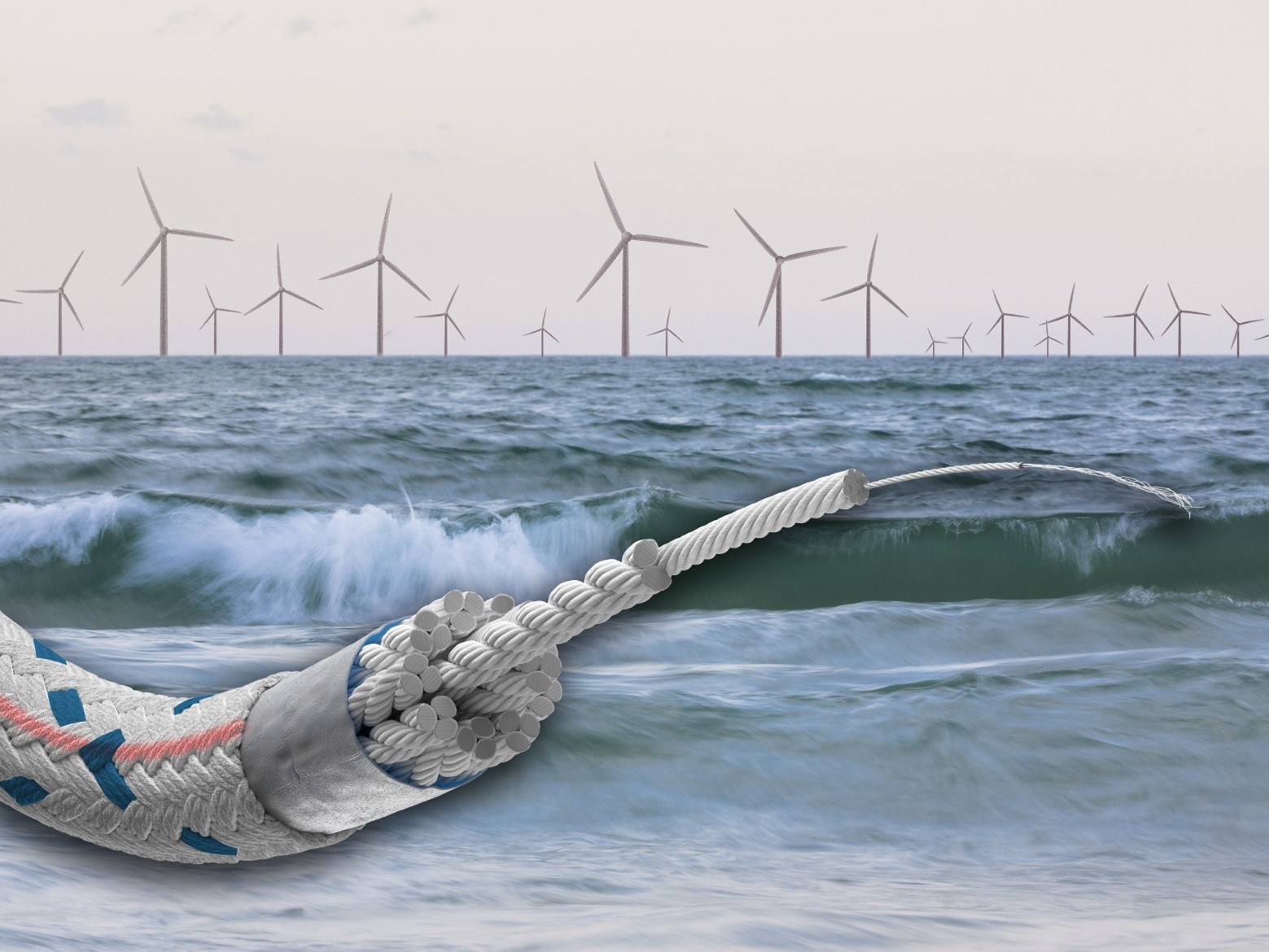Bekaert joins TAILWIND Project to develop floating offshore wind mooring solutions
Floating offshore wind (FOW) can harness stronger and more consistent wind speeds compared to onshore and fixed-bottom offshore wind turbines. The TAILWIND Project will embrace sustainable-by-design principles to deliver advanced station-keeping technologies.
The TAILWIND project, launched in January 2024, will deliver advanced station-keeping technologies, designed to maintain the position of floating offshore wind energy farms through innovative mooring lines and anchoring systems. The development of these technologies is critical to open new paths towards the global effectiveness and sustainability of FOW farms, driving tangible cost savings while reducing dependency on primary raw materials.
A global market and technology leader in material science of steel wire transformation and coating technology, Bekaert also develops beyond-steel solutions with its Scottish-based synthetic rope manufacturing facilities. Bekaert was invited to join the TAILWIND consortium for its experience in offshore mooring systems.
“I am very pleased that Bekaert is involved in the TAILWIND project that will further enable the growth of floating offshore wind which plays an important role in accelerating the generation of clean, sustainable energy” states Christof Dewijngaert, General Manager Synthetics at Bekaert. “With our track record in mooring systems for offshore oil and gas, we are committed to contributing to enabling the scale-up of more optimal station-keeping concepts and systems for floating offshore wind.”
Sustainability will be the key enabler for the value creation of the TAILWIND Project. A wide range of stakeholders will be engaged to investigate the acceptance of potential new technologies to act as a catalyst for increasing affordable wind power in the energy mix. TAILWIND also targets a significant reduction of the levelized cost of electricity (LCOE) produced by FOW farms thanks to the higher cost-efficiency of the new mooring and anchoring solutions, avoiding bottlenecks and major dependency on the supply chain.
“We are proud to kick off this important project with a world-leading consortium bringing industry and research together to develop more sustainable and cost-effective solutions for mooring floating wind turbines” remarks Thomas Langford, Director Offshore Energy at NGI. “We believe that TAILWIND has the power to deliver critical step-changes to industry practice, and look forward to seeing the project develop over the next few years”.
The TAILWIND project, funded by the EU’s Horizon Program, contributes to the goals set by the “REPowerEU” Plan and the “Fit for 55” package, aiming to accelerate the roll-out of renewables, diversify energy supplies and trigger consistent energy savings.
The TAILWIND consortium is composed of NGI - Norwegian Geotechnical Institute (Norway), Technische Universiteit Delft (Netherlands), Danmarks Tekniske Universitet (Denmark), SINTEF Ocean AS (Norway), Fundación Tecnalia Research & Innovation (Spain), Nautilus Floating Solutions (Spain), Bekaert (Belgium), Subsea 7 Norway AS (Norway), Fondazione ICONS (Italy), Clarke Modet Y Compania S.L. (Spain), NKT Cables Group A/S (Denmark), University of Southampton (UK).

Bekaert MoorLine for floating offshore wind mooring solutions
Attachment
